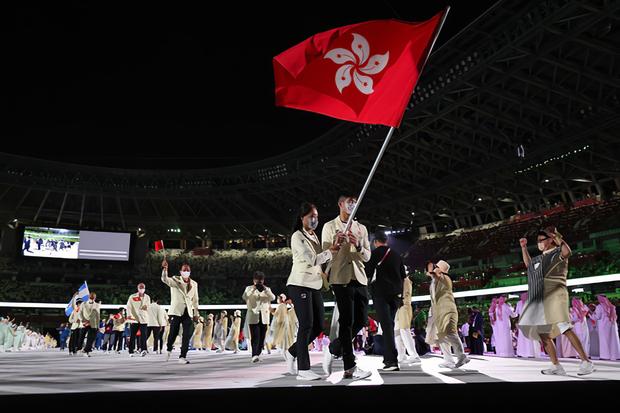 The Hong Kong delegation marches at
the Tokyo Olympics opening ceremony on July 23. (PHOTO PROVIDED TO CHINA DAILY)
The Hong Kong delegation marches at
the Tokyo Olympics opening ceremony on July 23. (PHOTO PROVIDED TO CHINA DAILY)
Edgar Cheung Ka-long sparked a wave of euphoria across Hong Kong when he became the special administrative region’s first athlete to win an Olympic gold medal since the handover and the second Olympic gold medalist in the city’s history.
Thousands of jubilant sports fans packed shopping malls and streets across Hong Kong to watch Cheung clinch the coveted prize in fencing at the 2020 Summer Olympic Games in Tokyo and cheered in front of giant LED screens for every point he scored against his opponent.
The SAR government has made big strides in boosting the development of sports through a three-pronged strategic approach since 2002 — promoting sports in the community, supporting elite sports development, and promoting Hong Kong as a center for major international sports events. More than HK$6 billion ($771 million) was allocated for the projects in the SAR’s 2021-22 budget.
After almost 20 years, the painstaking efforts are paying off. Hong Kong athletes captured one gold, two silver and three bronze medals at the recent Tokyo Olympics — an unprecedented achievement for Hong Kong sports. The haul surpassed the total number of Olympic medals the city had won in its history. Swimmer Siobhan Haughey, whose father is Irish, sparked a frenzy when she made history by winning the silver medal in the 200-meter freestyle event, clipped only by Australia’s Ariarne Titmus.
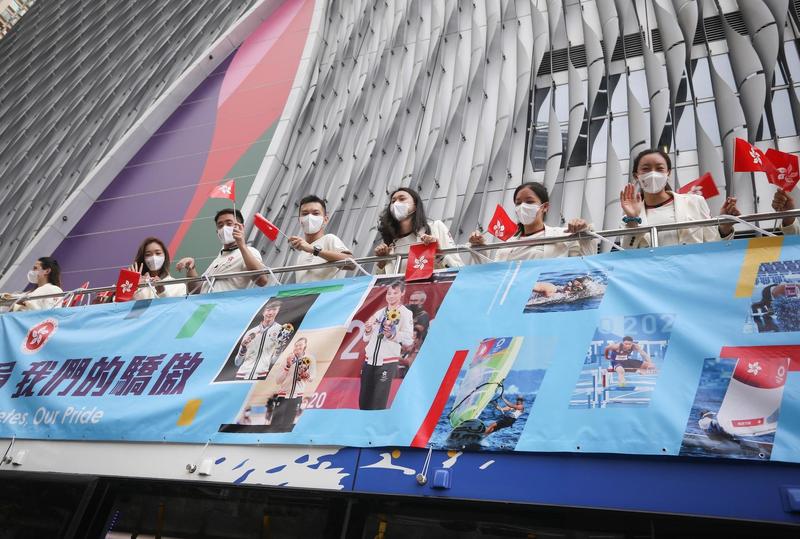 Hong Kong athletes, who earned
six medals at the Tokyo Olympics,
wave flags of the Hong Kong Special
Administrative Region at a bus parade
through the city on Aug 19. (RAYMOND CHAN / CHINA DAILY)
Hong Kong athletes, who earned
six medals at the Tokyo Olympics,
wave flags of the Hong Kong Special
Administrative Region at a bus parade
through the city on Aug 19. (RAYMOND CHAN / CHINA DAILY)
The HKSAR government has made big strides in boosting the development of sports through a three-pronged strategic approach since 2002 — promoting sports in the community, supporting elite sports development, and promoting Hong Kong as a center for major international sports events
The Olympic craze has greatly fueled sports enthusiasm in Hong Kong, with an overflow of fencing and swimming classes. A karate instructor said there has been an unprecedented surge in enrollment in karate classes this year and that regular and summer classes have been booked to the hilt. He expects to put in extra hours in the second half of this year to cope with the growing demand.
More young people are rushing to learn fencing, inspired by Cheung’s feat in Tokyo, while others are looking up to Haughey, said Trisha Leahy, chief executive of the Hong Kong Sports Institute. She called the new interest a trickle-down effect propelled by sports role models.
ALSO READ: HK's best-ever Olympics as city grabs six medals
“The more young people take part in sports, the more positive values they’ll pick up and the healthier they’ll become. It means that after a few years when they become adults, public health costs will come down as people are healthier by participating in sport,” Leahy said.
Intensive homework
She said that the combined efforts of schools and parents to ensure adequate time for physical activity from primary school onward contribute to the long-term health of social cohesion and the development of the right values of discipline and aspirations for young people. They’ll also adopt a positive and collaborative approach in their communities.
However, in a city like Hong Kong, which cherishes academic performance, physical education is often shadowed by other subjects in schools.
Lobo Louie Hung-tak, a senior lecturer of the Department of Health and Physical Education at the Education University of Hong Kong, said physical education lessons in primary and secondary schools are often suspended during examinations, which discourages students from participating in sports daily.
Students are too immersed in their homework, having to spend three to four hours on daily assignments, leaving them hardly any time to build up an interest in sports, Louie said.
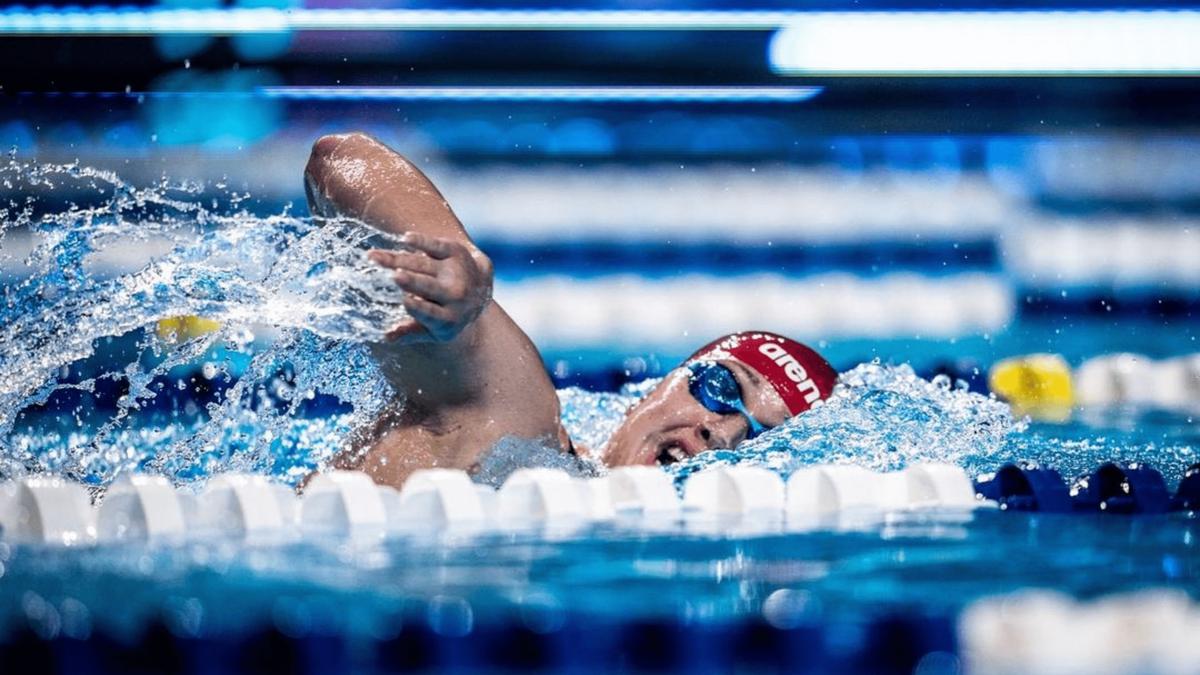 Siobhan Haughey, a two-time
silver-winning swimmer at the 2020
Tokyo Olympics, competes during a
match. (PHOTO PROVIDED TO CHINA DAILY)
Siobhan Haughey, a two-time
silver-winning swimmer at the 2020
Tokyo Olympics, competes during a
match. (PHOTO PROVIDED TO CHINA DAILY)
In addition to paying more attention to sports education, sufficient sports facilities are also needed to support training from the pyramid’s bottom of school sport to the top, the elite sport, said Lobo Louie Hung-tak, a senior lecturer of the Department of Health and Physical Education at the Education University of Hong Kong
He likened the development of the sports industry to a “pyramid theory”, with school physical education at the bottom, the middle part resembling community sports and the top being elite sports. The elite selection will be much easier if the pyramid could be fully developed at the bottom, he said.
In addition to paying more attention to sports education, sufficient sports facilities are also needed to support training from the pyramid’s bottom of school sport to the top, the elite sport, he added.
The SAR government set aside HK$7 billion to set up the Elite Athletes Development Fund in 2012 and a further HK$6 billion in 2018-19 to support the Hong Kong Sports Institute, which is regarded as the agent of the government’s elite sports training system. It will allocate HK$737 million to the institute through the EADF in 2021-22 — an increase of about 42 percent over 2017-18’s budget.
Following the good results at the Olympics, Hong Kong Chief Executive Carrie Lam Cheng Yuet-ngor announced in August five new measures to promote the sustainable development of sports in the city. The moves include the proposed allocation of HK$990 million to expedite the Hong Kong Sports Institute’s new building project; the joint establishment of a HK$300 million fund with the Jockey Club Charities Trust to enhance the competitiveness of athletes at international events in the coming few years; and the promotion of sports as a career, a profession and an industry.
ALSO READ: CE: HK strives to promote sports development
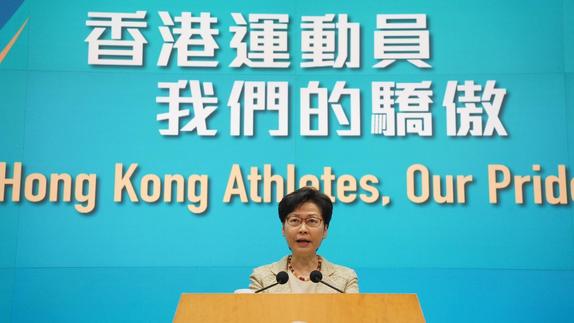 Hong Kong Chief Executive Carrie Lam Cheng Yuet-ngor announced new measures to support sports development at a regular press briefing against a special stage backdrop themed "Hong Kong Athletes, Our Pride", on Aug 10, 2021. (PHOTO PROVIDED TO CHINA DAILY)
Hong Kong Chief Executive Carrie Lam Cheng Yuet-ngor announced new measures to support sports development at a regular press briefing against a special stage backdrop themed "Hong Kong Athletes, Our Pride", on Aug 10, 2021. (PHOTO PROVIDED TO CHINA DAILY)
Despite the efforts, some industry players say there is still much to be improved.
As a small city with scarce land resources and a chronic shortage of recreational and sports facilities, Hong Kong has only 61 11-a-side soccer fields provided by the Leisure and Cultural Services Department — almost 13 fewer than the 73.9 recommended in the Hong Kong Planning Standards and Guidelines for the provision of recreational and sports facilities.
“Our public swimming pools are too crowded on weekends, while private pools are few in number and mostly small, and hotel swimming pools are too expensive for the average person,” said Joemary Leung, a fitness trainer and founder of My Fitnature, a company operating sports clothing business.
“Some of the LCSD fitness facilities are too outdated and not diverse enough. People are reluctant to rebook after having used them once,” she said.
But there’s good news in the pipeline. A new 28-hectare landmark, the Kai Tak Sports Park, which can hold 50,000 spectators, is expected to be completed by 2023. It’ll include a 10,000-seat indoor sports center, a 5,000-seat public sports ground, a harbor-front promenade, a variety of retail and dining choices, diverse public spaces and children’s playground facilities. On days when no events are planned, people can use these facilities.
Meanwhile, the State Council has approved the co-hosting of the 2025 National Games by Guangdong province and the Hong Kong and Macao SARs. The Kai Tak Sports Park, with its advanced hardware facilities, is expected to be the main venue for the 2025 National Games.
The co-hosting of the National Games is fantastic, as it is a good way to deepen the integration in the region, Leahy said. “We can use each other’s venues, compete together and bring the Games closer to Hong Kong people, and better integrate Hong Kong into the Greater Bay Area.”
She said there are many opportunities for collaboration and exchanges in the Greater Bay Area, including technology research and development.
When sports technology is developed for elite athletes, it can be used for the whole society as well, Leahy said.
ALSO READ: Co-hosting 2025 National Games cheers up sports sector
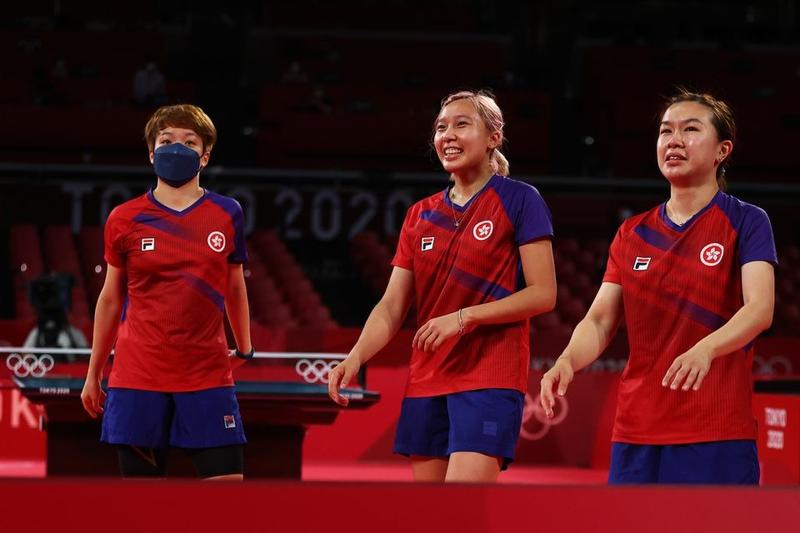 The Hong Kong women's table tennis team won a bronze medal at the Tokyo Olympics on Aug 5. (PHOTO PROVIDED TO CHINA DAILY)
The Hong Kong women's table tennis team won a bronze medal at the Tokyo Olympics on Aug 5. (PHOTO PROVIDED TO CHINA DAILY)
With the Greater Bay Area being a solid sharing platform, there’s a lot of room for expanding the sports economy and the professionalization of sports, said Trisha Leahy, chief executive of the Hong Kong Sports Institute, adding that the impact of exchanges and tourism and everybody moving around the region will be fantastic for all
“Some of the things we learn about how elite athletes recover from injuries can be used to help the public recover in a similar way. Some of the information we learn in sports technology can be very easily adopted for use in the community.”
“This is a great opportunity for Hong Kong to become more aggressive in developing sports as an industry, and offer products for the market, as well as to promote the professionalism and industrialization of sports,” Leahy said.
Prospects for HK sports
With the Greater Bay Area being a solid sharing platform, there’s a lot of room for expanding the sports economy and the professionalization of sports, she said, adding that the impact of exchanges and tourism and everybody moving around the region will be fantastic for all.
The latest data from the Census and Statistics Department show that the GDP of Hong Kong’s sports industry and related activities had risen from HK$51 billion in 2016 to HK$59 billion in 2019 — rising from 2 percent to 2.1 percent of the overall GDP during the period. The number of people employed in the sports economy had grown from 78,000 to 83,000.
Few accounting firms have conducted research on the scale of Hong Kong’s sports industry as the city’s core sports economy is very small and not commercialized enough, said Cecilia Yau, PwC’s media leader for the Chinese mainland and Hong Kong.
Whenever there’s a major sporting event, there will be a corresponding increase in associated advertising costs, which will definitely contribute to the development of the sports economy to a certain extent, Yau said.
Yau said further opportunities, such as focusing on the sports events, or matters related to those events, could be boosted, while marketers and the government can help attract more young talent to join the sports industry.
“Investing more in talent or tapping into the Greater Bay Area are both good recipes to boost the sports economy,” she said.
At the 2020 Tokyo Summer Olympics, the mainland delegation won 38 gold, 32 silver and 18 bronze medals, backed by a population of 1.4 billion people. For Hong Kong, with just over 7 million people, it seems that simply selecting sporting elites within this territory is not enough of an advantage.
Hong Kong has a small population, but when it’s integrated with the Greater Bay Area, there will be more talent available for selection and more sports facilities to hold various events, Yau said. “This could be the area we focus on to capture new opportunities,” she said.
Louie said the larger the population is, the wider the market is. With 70 million people in the Greater Bay Area, there are richer opportunities for promoting sporting events and expanding the sporting goods market.
READ MORE: Chan Ho-yuen wins badminton bronze at Tokyo Paralympics
The sports economy is a big industry that covers many areas, Yau stressed. “We cannot always rely on atheletes to support the entire sports economy. We need to focus on the other supporting talent for the whole industry. The sports media, event organizers, sports therapists, dietitians for athletes, training equipment researchers and sports coaches are all talent who should be involved in the industry.”
Contact the writer at suzihan@chinadailyhk.com


